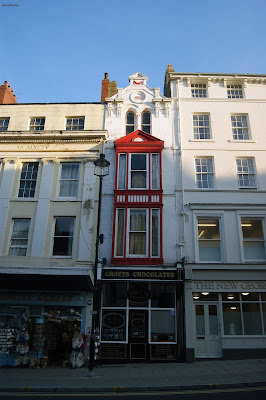History Of The Royal Naval College
The Old Royal Naval College in London is the centerpiece of a World Heritage Site in Greenwich, London, originally built as a hospital in 1696 The Greenwich Hospital, designed by architect Sir Christopher Wren ( he also designed the amazing St. Paul's Cathedral, London) was a place for retired sailors of the Royal Navy and has been described by the United Nations Educational, Scientific and Cultural Organisation (UNESCO) as being of 'outstanding universal value' and considered to be the 'finest and most dramatically sited architectural and landscape ensemble in the British Isles', it is also in my humble opinion a great place to spend a sunny afternoon in London and certainly an interesting place to visit.
 |
| Not Just Any Old College But A Royal Naval College And A World Heritage Site Too |
The Greenwich Hospital which had originally built between 1696 and 1712 closed in 1869, four years after it's closure in 1873 the site was purchased by the Royal Navy who converted the buildings into its training facility, this training facility would become the most important and highly regarded in the world, opening it's doors to not just English Seamen but to those from all corners of the British Empire. The college would remain there until 1998 when the Greenwich Foundation For The Old Royal Naval College took over the buildings who in turn leased large sections over to the Greenwich University. In 2002 the foundation announced plans to open the entire site to visitors, it's famous Painted Hall with it's beautiful interior, it's chapel and the grounds of the college would be opened free of charge.
 |
| The Royal Naval College Is An Interesting Place To Walk Around |
 |
| With Plenty Of Good Photo Opportunities Too |
The Painted Hall
One of the biggest attractions in the grounds of the college is The Painted Hall, featuring one of Europe's finest Baroque interiors the building contains the largest painted ceiling in England created to the designs of British artist Sir James Thornhill between 1707 and 1726. It was during this important time in British history that the United Kingdom was created and became a dominant power in Europe. The accessions to the throne of William III and Mary II in 1688 and George I in 1714 form the background of the painting's theme which also praises Britain's maritime and trading successes. The artist drew from a cast of around 200 figures which told the story of political change, scientific and cultural achievements and advances, naval exhibitions and commercial enterprises against a series of magnificent backdrops.
 |
| Old London With The City Skyline In The Background |
Queen's House
Queen's House is another important feature of the site and as it's name suggests is actually a former Royal Residence, built between 1616 and 1635 for King James I and his Queen Anne of Denmark the building predates the College and Hospital. It's architectural and historical importance is heightened by the fact that it was the first building in the country to be completely designed in the 'classical' style, it's architect Inigo Jones had recently returned from a trip to Italy and drew inspiration from the architecture he had seen abroad. Later additions to the building, both an east and west wing are joined by an elegant row of columns or colonnade and today this Grade I listed building is used to display some of the Naval College's large collection of art.
 |
| Beautiful Architecture |








Comments
Post a Comment